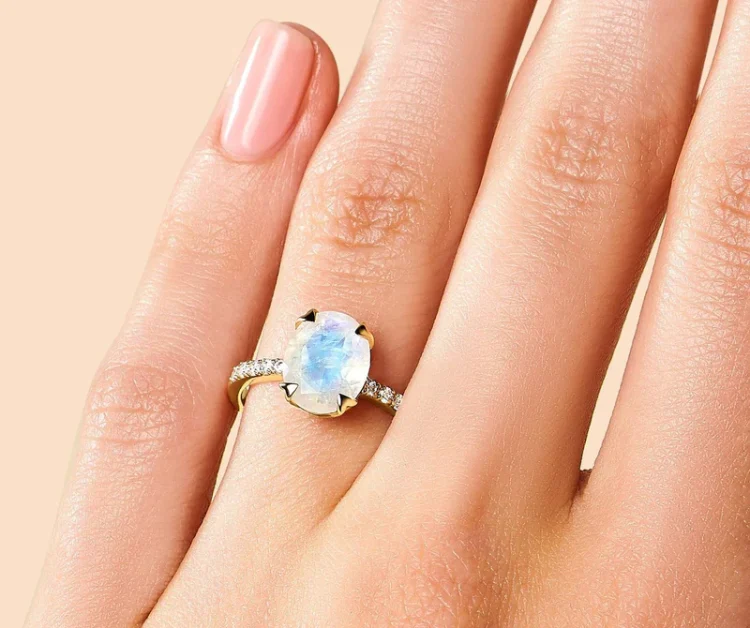June, the month of blooming flowers and warm sunshine, brings with it a gem of extraordinary beauty and allure as its birthstone – the pearl. Coveted for centuries for its ethereal charm and natural elegance, the pearl holds a unique place in the realm of gemstones. This article delves into the rich history, cultural significance, and fascinating characteristics that make the pearl a timeless symbol of purity and sophistication.
Historical Significance:
Pearls have captivated civilizations throughout history, with their origins traced back to ancient times. The earliest records of pearls being cherished date back to over 4,000 years ago in China, where they were believed to be tears of mythical creatures or formed from the essence of the moon. In ancient Rome, pearls were considered the ultimate symbol of wealth and status, often adorning the attire of emperors and high-ranking officials.
Ancient civilizations were not the only ones enamored by pearls. The Bible makes several references to pearls, associating them with wisdom and virtue. In Hindu mythology, pearls are linked to the moon and are considered symbols of purity and love. The fascination with pearls transcended cultures, establishing them as a coveted gemstone with enduring appeal.
Cultural Significance:
Pearls hold a special place in various cultures, often representing purity, innocence, and beauty. In many Eastern cultures, pearls are associated with spiritual transformation and enlightenment. In Japan, the Akoya pearl, cultivated with meticulous care, is a symbol of harmony and perfection.
In traditional Chinese culture, pearls are believed to bring good luck and prosperity. The ancient Chinese considered pearls as symbols of wisdom, and they were often ground into a powder and used in medicinal remedies. Today, pearls continue to be cherished in Chinese culture, often passed down through generations as a symbol of family heritage.
The Birthstone Connection:
June is unique in having three birthstones associated with it – pearl, alexandrite, and moonstone. Among these, the pearl stands out for its timeless beauty and historical significance. The American Gem Society officially recognizes the pearl as one of June’s birthstones, and it is a popular choice for those born in this enchanting month.
Characteristics of Pearls:
Pearls, unlike other gemstones, are formed organically within the soft tissue of certain species of mollusks, such as oysters and mussels. They are created as a defense mechanism against irritants, with layer upon layer of nacre being deposited around the foreign object. This natural process results in the unique luster and iridescence that pearls are renowned for.
Pearls come in a variety of shapes, sizes, and colors. From the classic white Akoya pearls to the iridescent black Tahitian pearls, each pearl possesses its own charm and character. The size of a pearl can range from tiny seed pearls to large baroque pearls, making them versatile for various jewelry designs.
Caring for Pearls:
As organic gems, pearls require special care to maintain their luster and longevity. Avoid exposing pearls to harsh chemicals, perfumes, and extreme temperatures, as these can damage the delicate surface of the pearls. It is advisable to store pearls separately from other jewelry to prevent scratches, and they should be cleaned with a soft, damp cloth to remove any accumulated dirt or oils.
Modern Interpretations:
While pearls have a rich history rooted in tradition, contemporary designers and jewelers continue to find innovative ways to showcase their beauty. From classic pearl strands to modern, avant-garde designs, pearls have evolved with the times while retaining their timeless appeal. Celebrities often don pearls on red carpets, further solidifying their status as a symbol of sophistication and grace.
Conclusion:
The pearl, with its rich history, cultural significance, and unique characteristics, stands as an iconic gemstone for those born in June. Its timeless beauty and versatility have ensured its enduring popularity throughout the ages. Whether passed down as a family heirloom or chosen as a modern statement piece, the pearl continues to be a symbol of purity, elegance, and everlasting beauty. As we celebrate the month of June, let the allure of the pearl remind us of the enchanting and enduring qualities that make it a truly remarkable gem.

